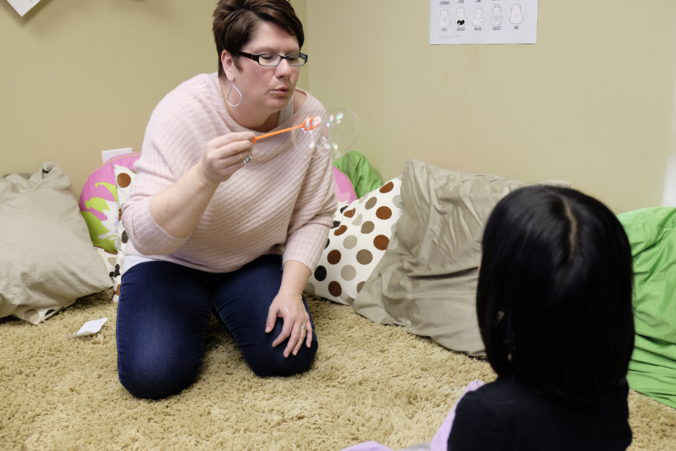Children can be at risk for malnutrition for many different reasons. Some children can be especially vulnerable to malnutrition, such as infants and children with disabilities who may have different needs or require additional support with feeding and mealtimes.
Malnourishment can result in long-term impacts on growth and development, so early identification is important! Some physical symptoms of malnutrition include the following:
Stunting When children are too short for their age, this can be an indicator of chronic malnutrition.
Wasting When children are underweight for their height, this is often considered an indicator of acute malnutrition.
Underweight This indicates that children are underweight for their age.
Overweight This indicates that children are heavier than they should be for their age.
Micronutrient deficiencies Key micronutrient deficiencies such as vitamin A, vitamin D, calcium, iron and others can be due to a number of influences including dietary intake, environmental factors, parasites or even a child’s disability.
Growth Charts
Often, growth charts are used to track and monitor children’s growth in addition to regular health screenings. Growth charts allow you to track children’s progress over time in relation to normal growth patterns. If a child falls outside of these growth patterns, it may indicate that some follow-up is needed to support healthy and full development.
Here are two sets of growth charts from the World Health Organization (WHO):
- WHO Child Growth Standards growth charts for children up to 5 years old
- WHO Growth Reference Data growth charts for children 5 to 19 years old
For the most accurate assessment of your child’s growth and development, consult your pediatrician.

Check out additional parenting resources!
View our expanded list of recommended parenting websites, books and other resources organized by topic.
Vitamin and Mineral Deficiencies
Having low levels or a deficiency of certain micronutrients at a young age can negatively impact a child’s developmental potential.
It is important to recognize that deficiency and low levels of some micronutrients can cause more than just what the eye can see. A lack of certain vitamins or minerals can contribute to behavioral challenges, anxiety and depression. The best ways to avoid such deficiencies are to optimize your child’s diet by including a variety of foods from different food groups and consulting your child’s dietitian or pediatrician at regular checkups.
Here are just a few examples of some nutrient deficiencies.
| Micronutrient | Deficiency Symptoms | Potential Causes of Deficiency |
|---|---|---|
| Vitamin A | Weakened resistance to infection Impaired growth Vision problems, including night blindness Eye inflammation or dry eyes Dry skin and hair | Inadequate dietary intake Infection Impaired absorption |
| Vitamin D and Calcium | Rickets Bone pain Skeletal deformity (bowed legs) Dental problems Slow eruption of teeth Malformed or decay-prone teeth Poor linear growth (length/height) | Inadequate dietary intake Impaired absorption Prolonged lack of exposure to direct sunlight |
| Iron | Pale appearance Irritability Decreased resistance to infection Inability to pay attention Impaired behavior Fatigue and weakness Headache Lack of appetite Learning disorder | Low iron stores at birth Low dietary intake of iron High intake of foods that impair iron absorption Blood loss due to parasitic infections and inflammation Lead exposure |
| Iodine | Hypothyroidism (slow activity of the thyroid) Goiter (enlargement of the thyroid) Cognitive and physical delays, especially in infants | Low intake by birth mother during pregnancy Inadequate dietary intake |
| Zinc | Poor appetite Slow wound healing Sexual immaturity Skin rashes Slow growth Weak immunity Diarrhea | Low intake of animal protein High intake of fiber and phytates |

Receive Post Adoption Coaching & Education
All parents encounter challenges as their children grow up. And sometimes, issues may arise that leave you uncertain as to how best to respond. But not every issue requires therapy or counseling. The PACE program is here to help during those times.


